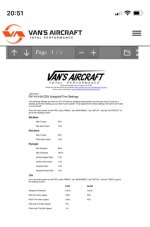Boy, I'm going to sound like a snob or a malcontent, but it's for a good cause...
I've got the G3X autopilot in the RV-9A, and I really do like it, but it has quirks. I don't know if any/all of these have been resolved (some have!) but here are some observations:
* The standard way of intercepting a course (like an ILS) is to establish a 40° intercept heading and then, when close, capture the course. Pretty standard. However, if you're already close to the course you want to track, there's no need to turn 40° to intercept -- you're already there! I've seen the autopilot fly the 40° intercept right through the desired course sometimes... not recently, though, haven't been in that situation.
* In a good crosswind, the autopilot doesn't quite get the needles centered, just almost. If I recall my control theory courses from fifty (gasp!) years ago, this can be fixed by adding another state to the lateral control algorithm. Alternatively, crosstrack offset and velocity can be used directly from the GPS. (I've got a patent on that).
* My standard "autopilot takeoff" technique, which I use on an instrument flight plan or practicing same, is to hand fly the takeoff and retract the flaps at 80 knots. (Taking off flaps up in the RV-9A gives a too nose high pitch attitude that can obscure the runway, especially a narrow runway. Ask me how I know...) Once flaps are up, I will then engage the autopilot and that engages pitch hold and roll hold. I can then adjust pitch with the trim wheel to get the airspeed or vertical speed I want as the plane accelerates. This avoids the transients that Todd was referring to. Once stabilized, I'll engage airspeed or vertical speed.
* I've found vertical speed and airspeed hold work just fine when they are engaged without a large initial offset.
* Garmin did make one much-needed improvement. Early on, the autopilot made all turns at 30° bank, regardless of airspeed. This meant that the turns could be well over standard rate, and when controllers are giving vectors, they expect the turns to be standard rate. I got into a p***ing contest with one of the Garmin engineers who said that there was no regulatory requirement to do what I suggested. I then asked him why their autopilot would not pass an instrument flight test. That was years ago, and I think Garmin has been much more responsive to customers since.
* The autopilot doesn't know to add back pressure entering a turn. The pitch guidance doesn't do anything until the plane has started to lose a bit of altitude. Fixing this would require the autopilot to add back pressure before altitude is lost, but the question is, how does the autopilot know how much to add? This level of sophistication is probably beyond what can be done in a low cost autopilot.
For all my squawking, what's impressive about the G3X autopilot is that it can work on a wide range of airplanes with so few adjustments that are set by amateurs. In a "real" autopilot, I'd expect more adjustments that are determined when the autopilot is certified for a particular airplane and then maybe tweaked at installation time -- I'm speculating there.
No, it's not perfect and there are tricks to get it to work well -- no help from the manuals, but that's another story -- but I'm so glad I have it. There's no comparison between sitting in the cockpit, checking uplinked weather and maintaining high situational awareness versus the bad old days of getting a weather briefing, launching into the weather and hand-flying, hoping that the clouds had paid attention to the forecast.





